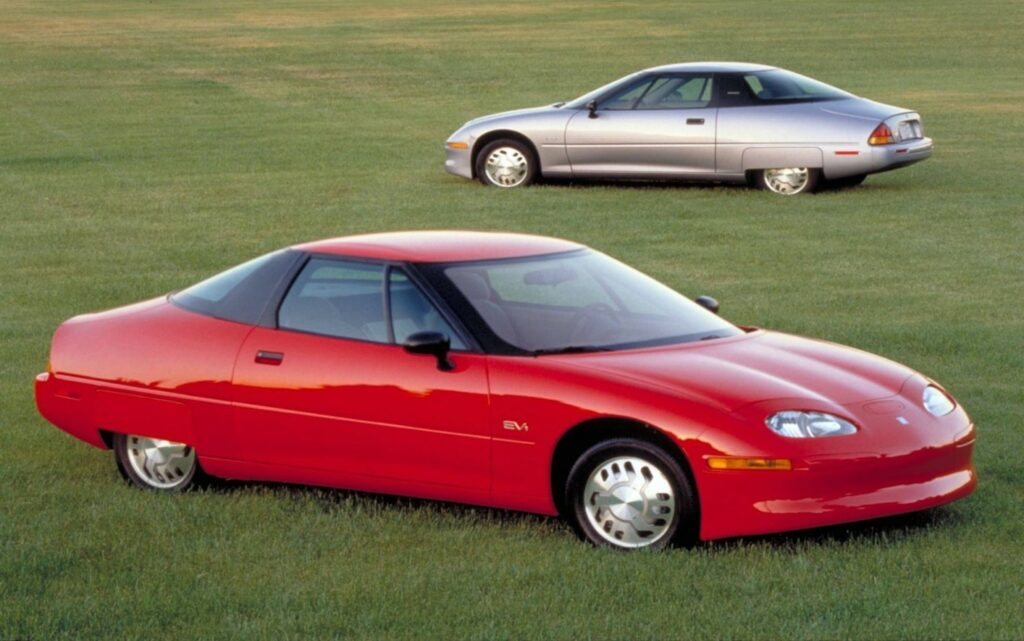By EC Policy Intern Zane DeVitre-Shalauta
Last year, electric vehicles (EVs) hit the technology “tipping point.” Market-wide adoption of EVs reached 5%, a generally accepted milestone indicating that the technology has left its early stages. The automobile itself followed this trajectory, replacing the horse and buggy near the end of the 19th century. EVs are the next stage of this forward technological progression, and the Electrification Coalition is working to make this a reality, just as early proponents of the automobile did.

Illustration of the US’’s EV tipping point compared to other countries (source)
EVs are cleaner, quieter, and cheaper to maintain than ICE vehicles. Transitioning to EVs will not only serve the environment, but also the national and energy security interests of the United States. These benefits alone, however, will not drive mass adoption. Like any other movement, complacency or a lack of direction guarantees stagnation, or, worse, total derailment. The EV movement has suffered this fate twice in history.
The Golden Age of EVs generally refers to the late 19th century and early 20th century. During this time, there were several competing methods of powering vehicles. The leading method of the time was steam power, though it was quite inefficient. EVs of the time had many benefits over other powertrains: no difficult engine cranking to get it started, no fumes to inhale, and no disruptive engine noise. Thomas Edison cited these reasons when predicting that the EV would quickly become the vehicle of choice for America. But as we know, none of this came to fruition. Several factors, such as the Oil Rush and the oil-friendly legislation that supported it, ended this EV golden age. The comparatively high price of the materials needed for batteries simply could not compete with the low cost of oil.

An advertisement for Baker Electrics in the December 3rd, 1910, edition of the Syracuse Journal
The second time EVs were thwarted began with a promising shift to address air quality. The Clean Air Act passed in 1970, allowing California to set emissions standards, empowering the environmental movement. In this vein, responding to the discontent surrounding smog in California, the . Initially, CARB mandated that automakers begin making zero-emission vehicles to offer to the public in a “ramp-up” style approach.
Born of this mandate was the EV1, produced by General Motors and distributed through special lease programs in select cities. While the range left something to be desired (topping out around 75 miles), it proved to be more than enough for a daily commuter car. EV1 drivers were hooked. Especially in a city like Los Angeles—where the smog was so bad that my parents told me they couldn’t go outside without their eyes, skin, and lungs burning—a vehicle that was practical, fun, and emission-free seemed like a miracle. Other automakers followed suit by producing vehicles like the Toyota RAV4 EV and the Ford Ranger EV.

The General Motors EV1 (source)
Unfortunately, the EV momentum would not last. Automakers, oil companies, and the George W. Bush administration waged a relentless campaign against the zero-emission vehicle mandate, causing CARB to scrap it To the dismay of EV1 drivers, the company rounded up nearly all EV1s and destroyed them. Efforts to electrify car lineups were once again dead.

Crushed EV1s in Arizona (source)
Where the first and second deaths of the EV differ, however, was the presence of a group of people who had a taste of the future and were not going to give it up without a fight. The EV1 drivers became EV champions, protesting the destruction of the electric car. Two of those moved by this action were Martin Eberhard and Mark Tarpenning, who would later channel their passion and hope into an EV startup, Tesla Motors. Through tireless work challenging the status quo, the electric car was brought back to life, bringing us to the modern day where in the first quarter of 2023, EV market share reached nearly 9 percent, and analysts predict EVs could reach 23% of market share by 2025.

Results of Boston Consulting Group’s EV Market Analysis (source)
Despite this current trend , several brands still do not offer even a single EV model and EVs only make up 1% percent of on-road vehicles. This highlights the continued need for the advocacy that is at the center of our work here at the Electrification Coalition. Organizations like ours are rooted in a bumpy history of resistance to change. It will not be until EV supply chains, manufacturing, and infrastructure are built out that we can finally relax into the idea that EVs are here to stay. For now, though, transportation electrification is like one-pedal driving and regenerative breaking: taking our foot off the acceleration will bring us quickly back to a stop. The path to energy security, strong supply chains, and a stable climate is best traversed by putting the pedal to the metal.
